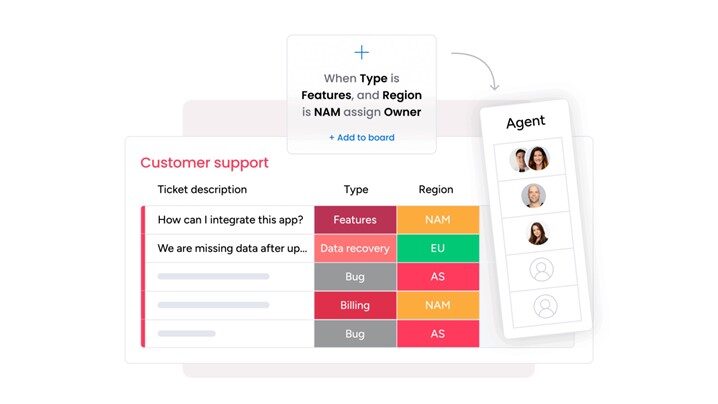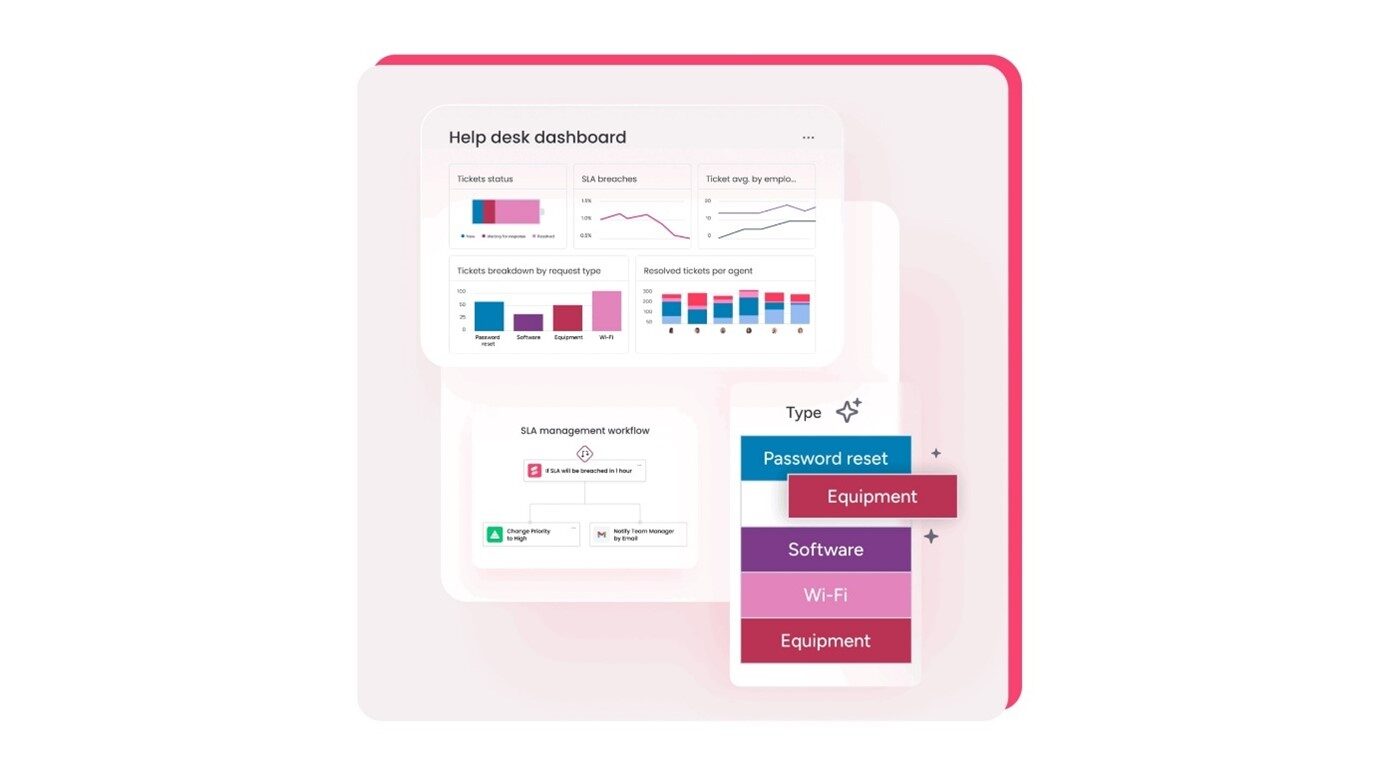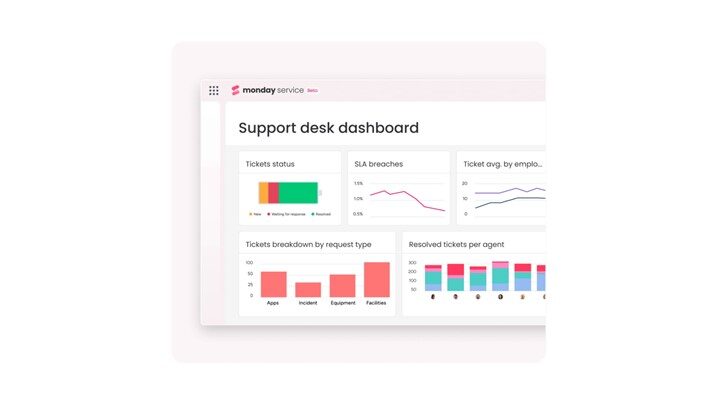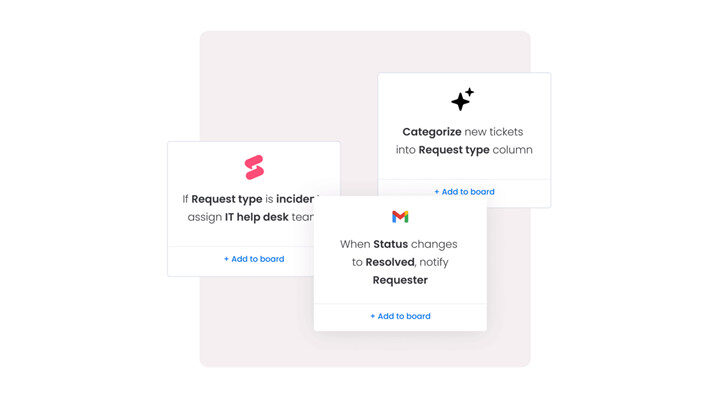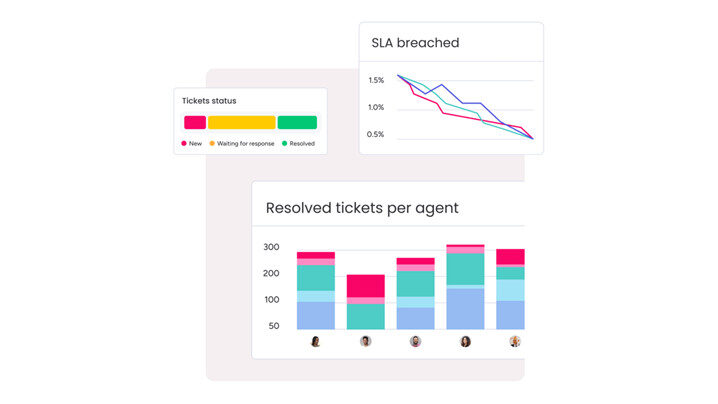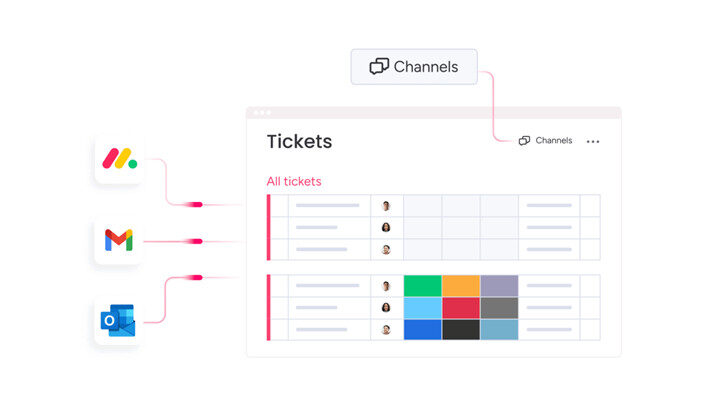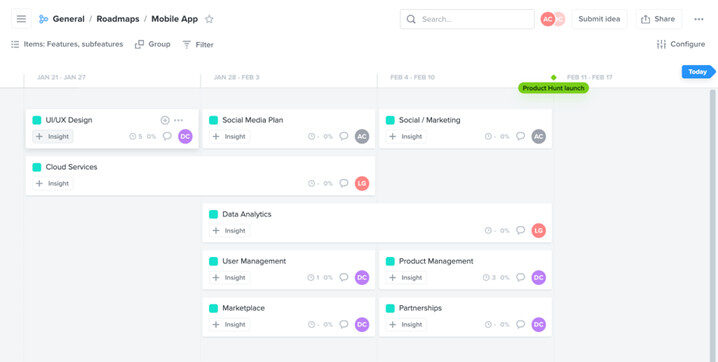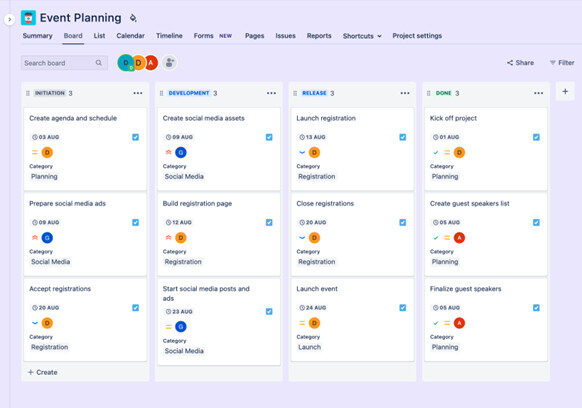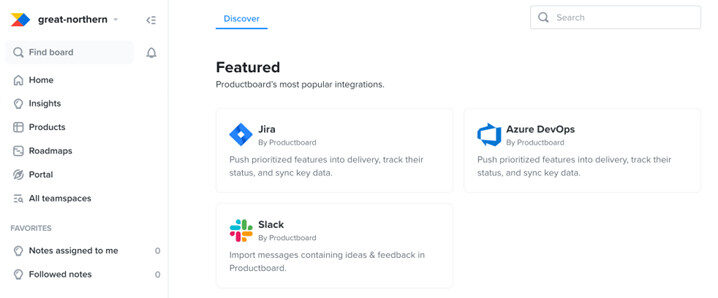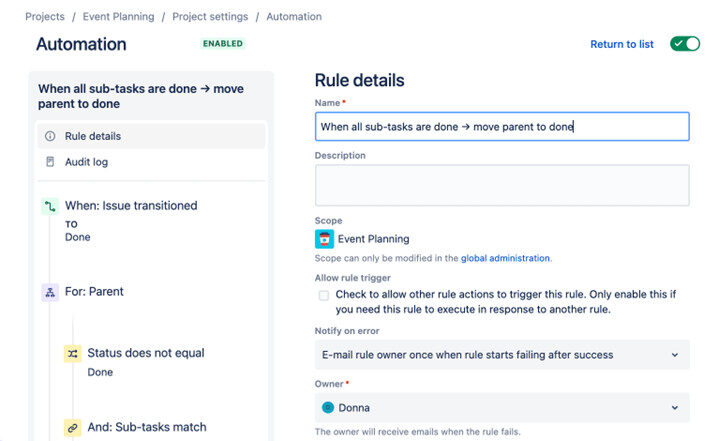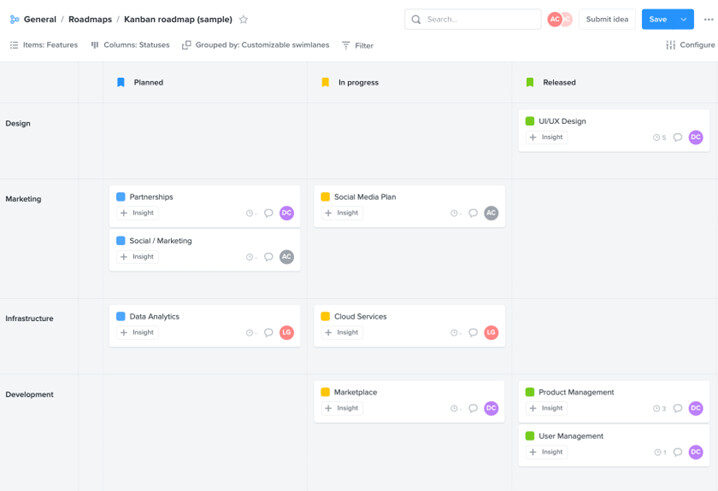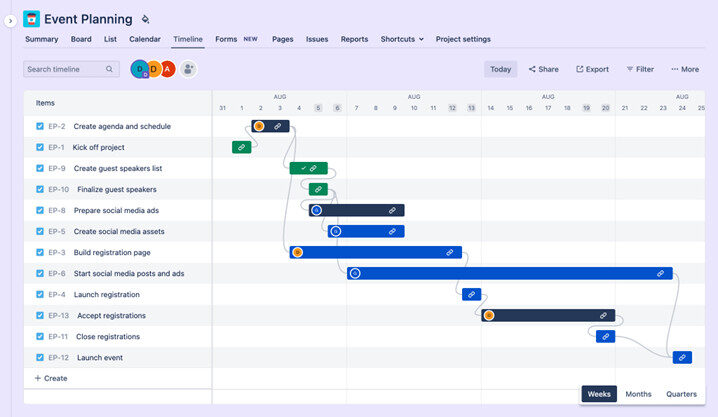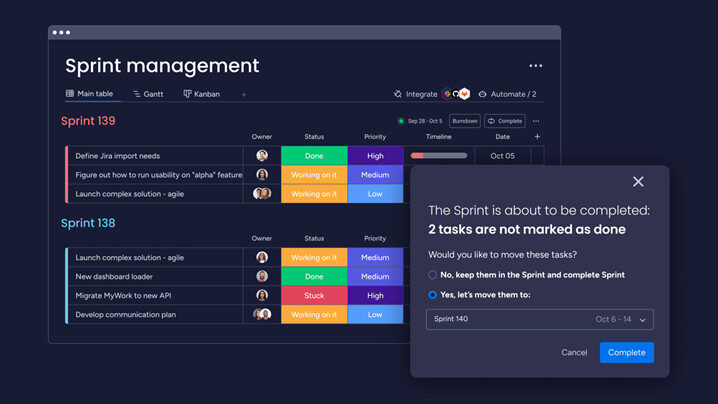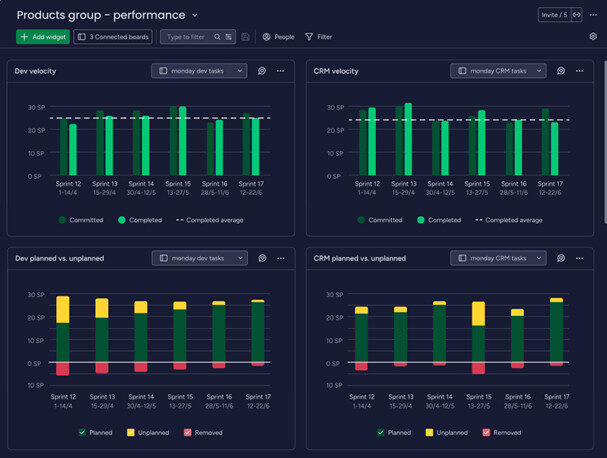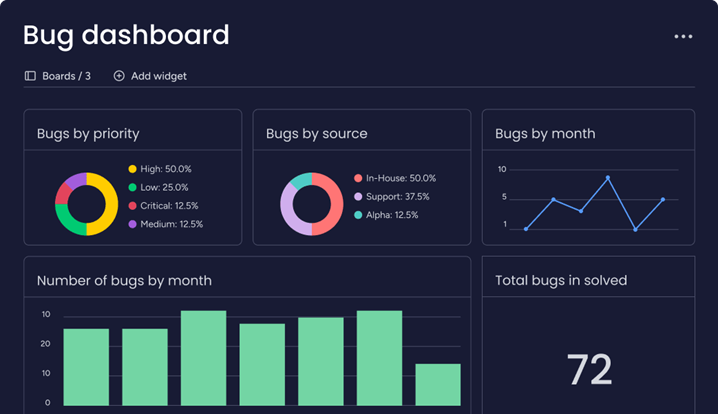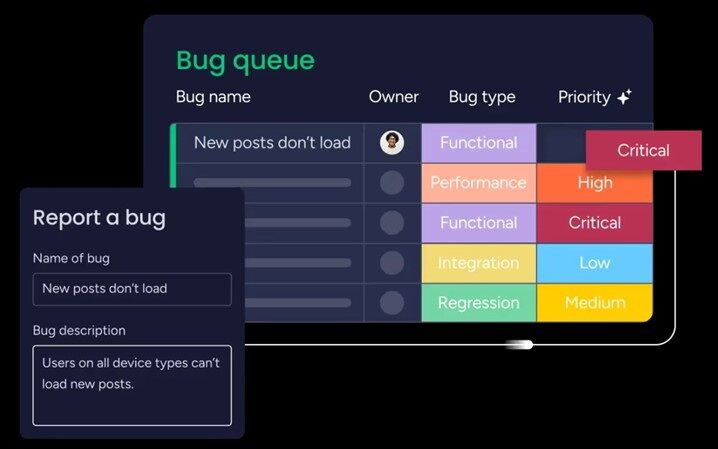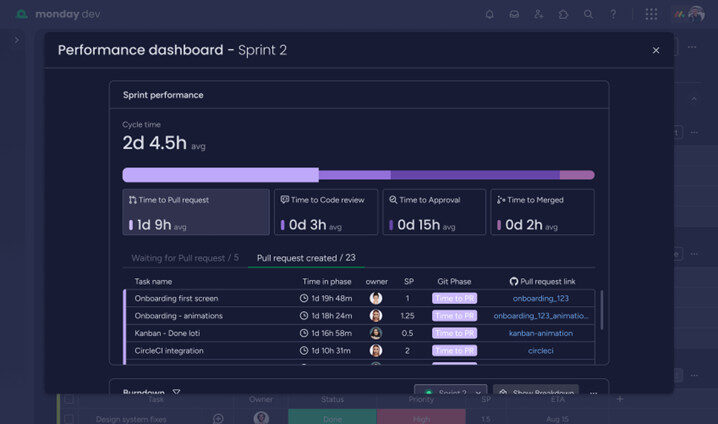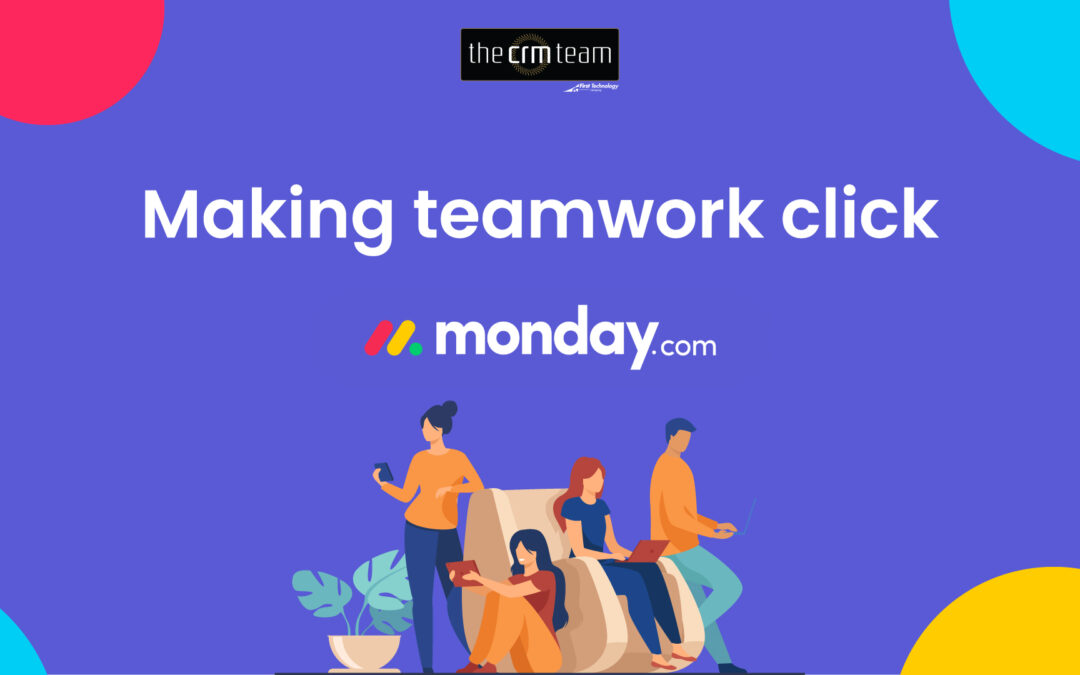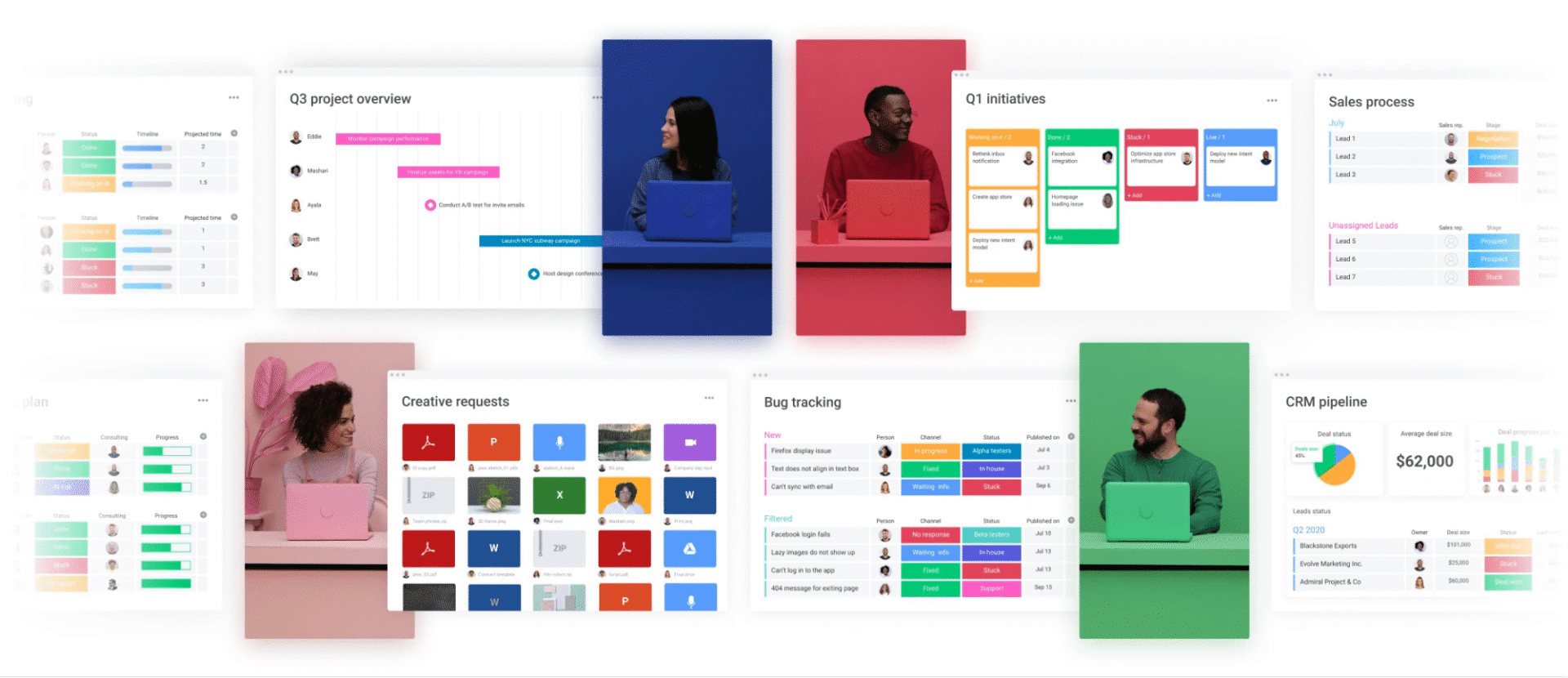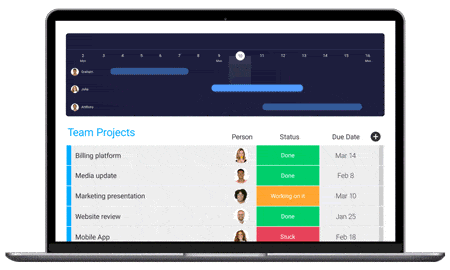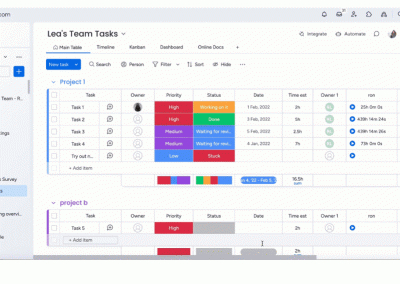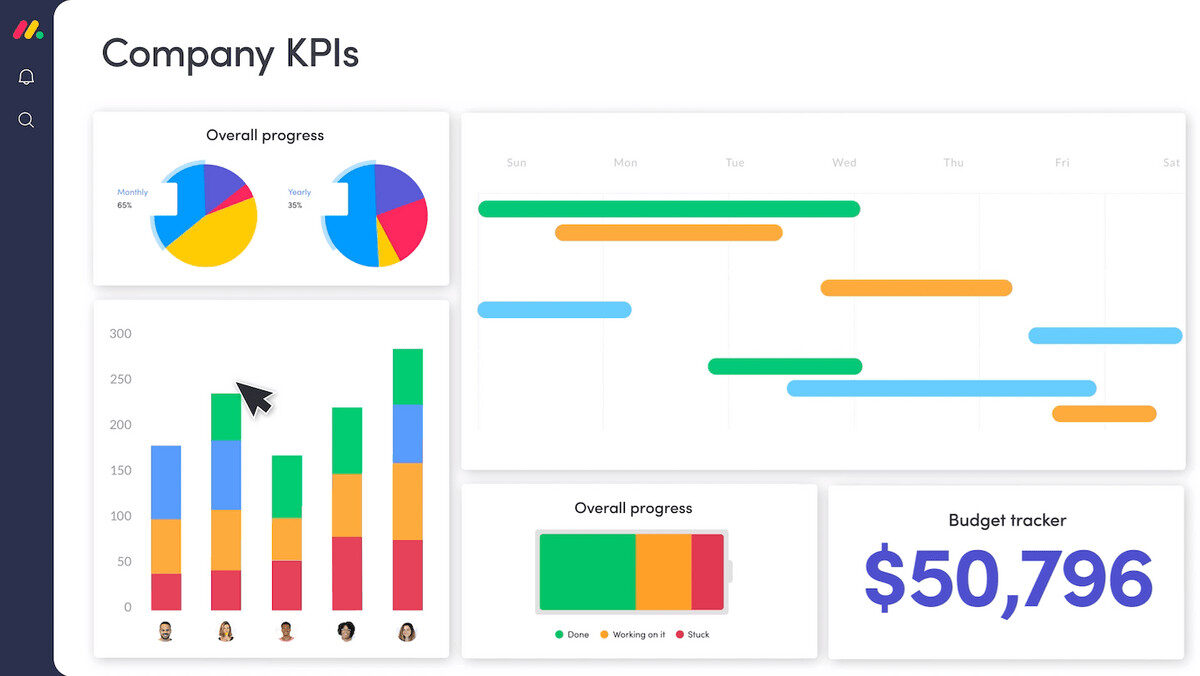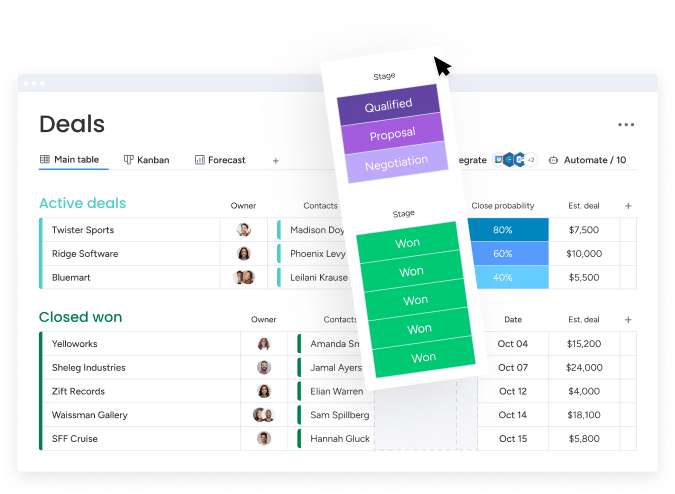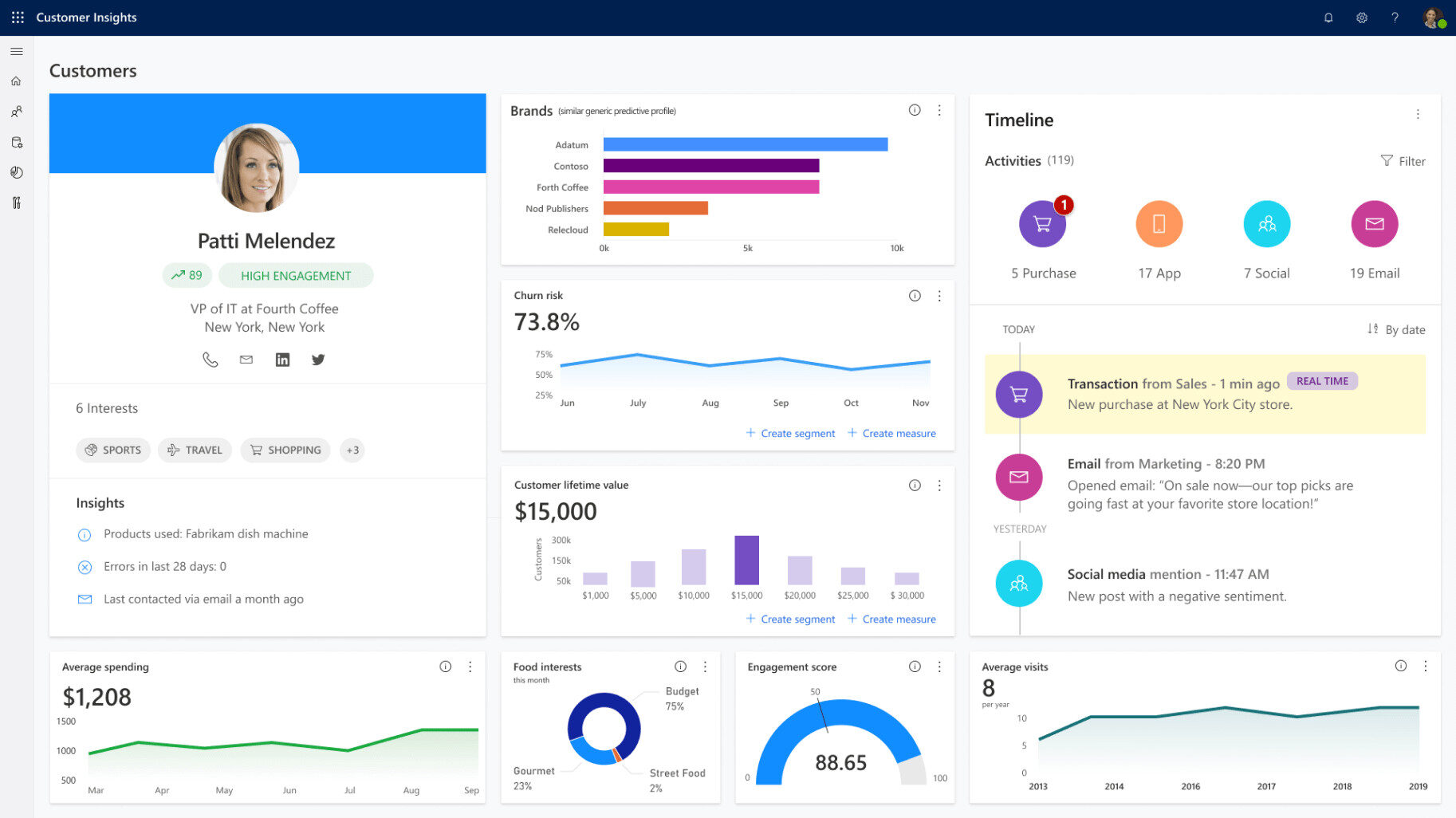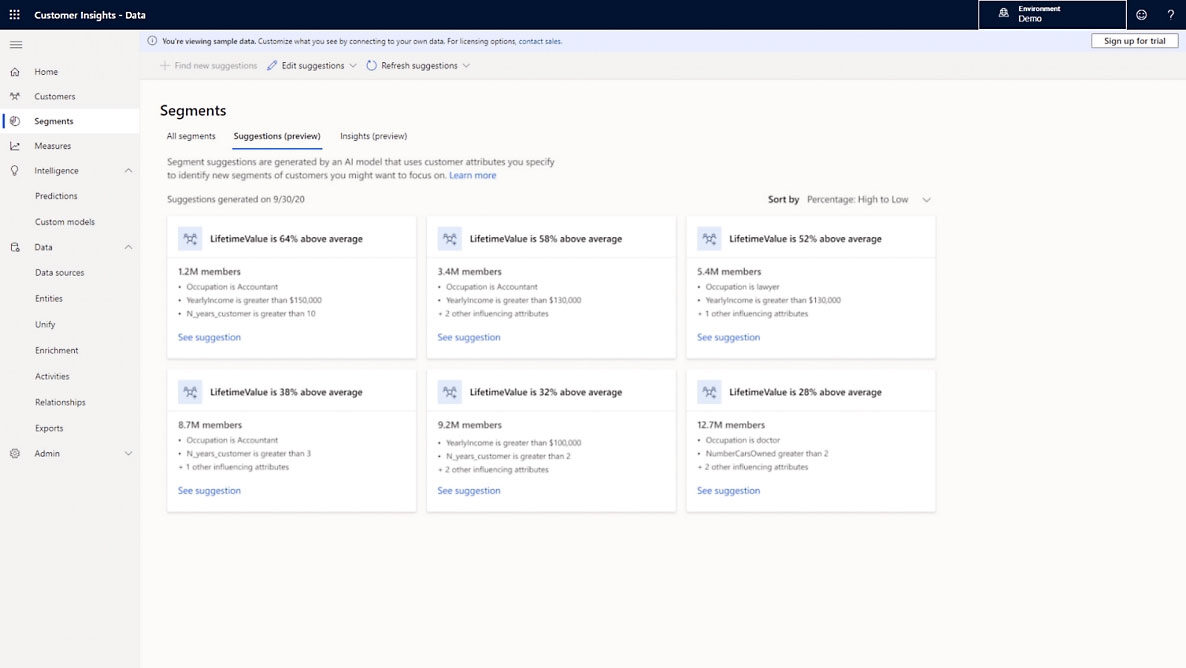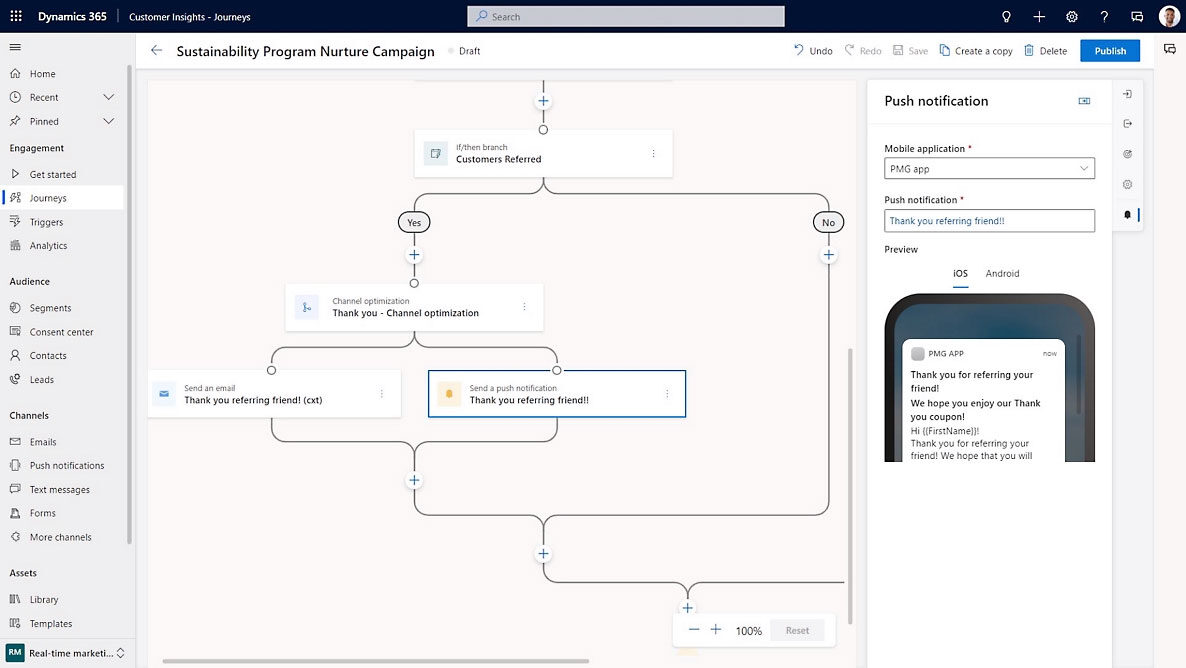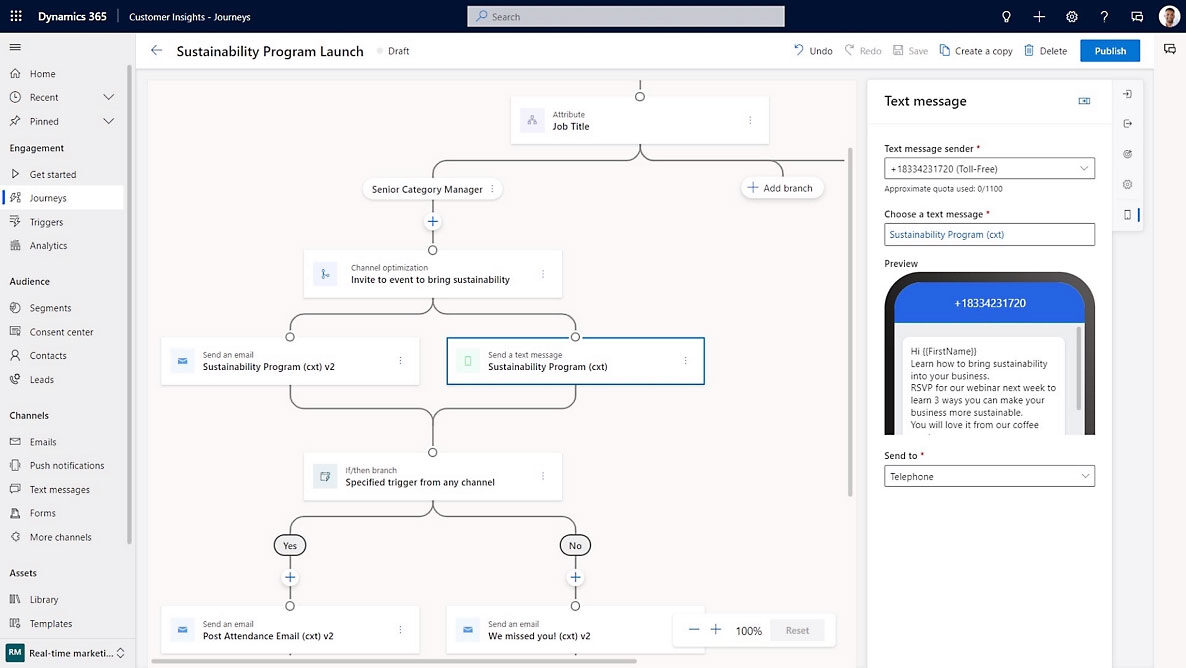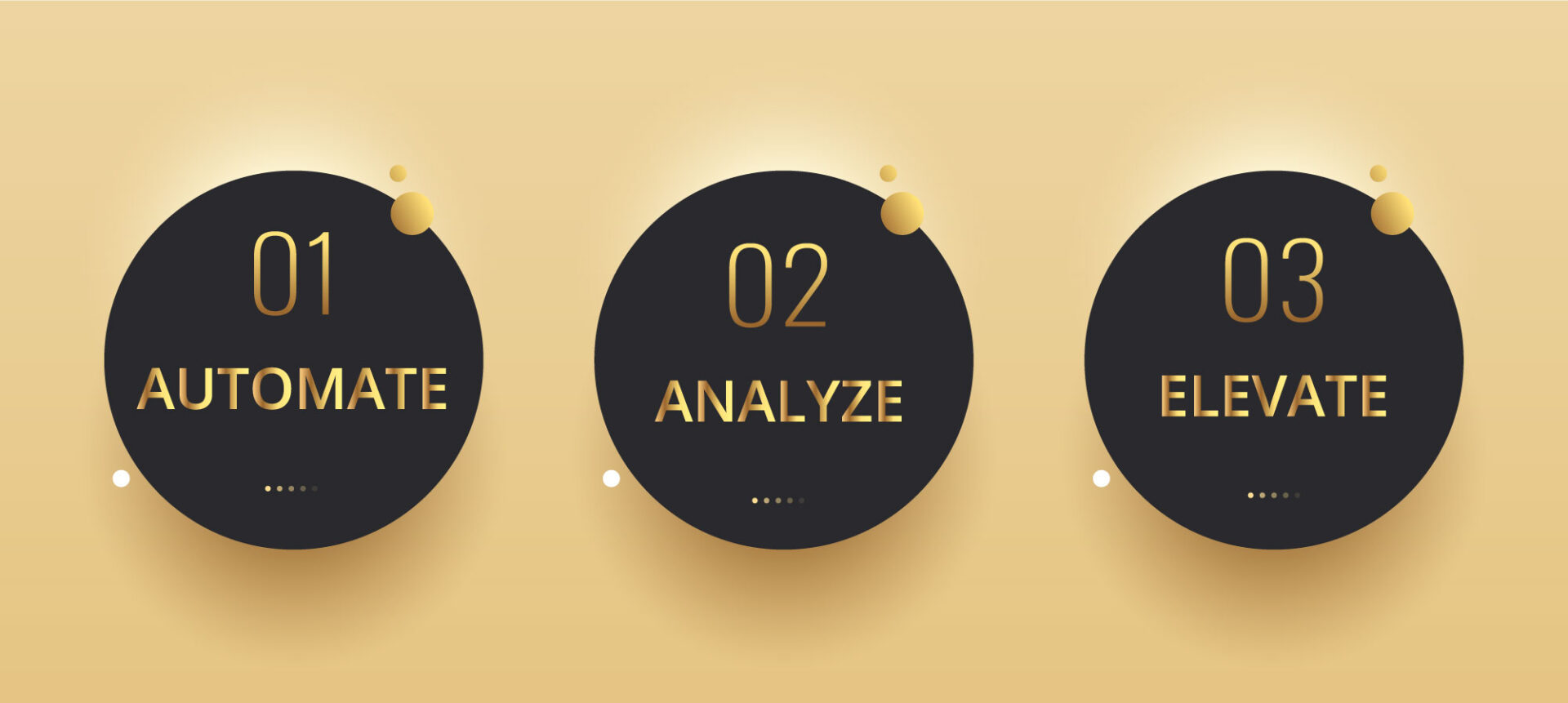An IT service portal centralizes support requests, resources, and updates—helping teams resolve issues faster and operate more efficiently. With monday service, organizations can deploy an AI-powered, no-code portal that streamlines workflows, improves visibility, and boosts employee satisfaction.

IT service portals: the key to faster, smarter support
Transform IT Support with Smarter Service Portals
IT service portals: the key to faster, smarter support.
Say goodbye to email chaos. With monday service, IT teams gain a clear, automated, and user-friendly portal that keeps requests visible, measurable, and under control.
The CRM Team
Sept 28, 2025
13 Mins Read
IT service portals: the key to faster, smarter support
Support teams are under pressure to resolve requests quickly, yet many of those requests are repetitive and time-consuming. An IT service portal gives employees and customers one place to request support, find resources, and track progress. In this article, you’ll learn how IT service portals improve productivity, lower costs, and give employees more control, plus how a platform like monday service makes it easy to launch one with AI-powered automation and no-code customization.
Key Takeaways:
- $An IT service portal cuts down on duplicate requests, lowers costs, and delivers consistent support.
- $Employees gain self-service access to a knowledge base and service catalogue, reducing wait times.
- $Automations streamline IT workflows, from routing tickets to sending updates and escalations.
- $Dashboards and reporting provide visibility into SLA performance, ticket trends, and recurring issues.
- $Enterprise-ready features like SSO, SCIM, and audit logs ensure security and compliance at scale.
- $With monday service, you can launch a customizable IT service portal powered by AI and no-code configuration.
TABLE OF CONTENTS
What is an IT service portal?
An IT service portal is a digital workspace where employees and customers can access IT resources, request support, and track updates in one place. Instead of relying on manual replies from a helpdesk, people get self-service options that resolve issues quickly.
The goal is twofold: give employees more control over support and shift IT’s focus from routine tickets to higher-value work. Unlike a traditional helpdesk that manages requests one by one, a service portal reduces that dependency with tools like a knowledge base, service catalogue, and automated workflows.
Why invest in an IT self-service portal?
IT teams face growing demands, while employees expect quick answers. A self-service portal supports both needs:
- Boost productivity: Employees resolve issues on their own instead of waiting in queues.
- Equip employees: A knowledge base and service catalogue give people reliable resources when they need them.
- Cut costs: Minimizing routine requests frees IT to focus on strategic projects.
- Deliver consistent service: A clear, reliable process builds trust across the organization.
When employees can find answers quickly, ticket volume naturally drops and both IT and employees benefit.
What features make an IT service portal effective?
An IT service portal should deliver more than basic ticket logging. The right features drive adoption, make self-service usable, and give IT the visibility to manage requests efficiently. Together, these capabilities create a smoother experience for employees and measurable gains for IT.
Build a knowledge base employees rely on
A knowledge base is the foundation of self-service. Step-by-step guides, FAQs, and troubleshooting walkthroughs let employees solve routine issues on their own. This reduces wait times and shifts IT’s focus to more strategic projects. To be effective, a knowledge base should be easy to update, searchable, and accessible across devices.
Streamline requests with a service catalogue
A service catalogue standardizes how employees request access, devices, or software. Instead of sending ad hoc emails, they choose from predefined services with clear descriptions and approval workflows. This consistency helps IT track requests from submission through resolution without unnecessary manual effort.
Track tickets with visibility and accountability
Some issues still require IT support. A strong portal makes ticket logging simple and transparent, giving employees clear visibility into ownership and progress. Features like automated notifications, ticket history, and SLA tracking strengthen trust and reduce back-and-forth communication.
Make search intuitive and reliable
Search is what makes self-service usable. Employees should be able to quickly find the right resource without sifting through long lists. A modern portal surfaces the most relevant content, whether it’s a guide, a catalogue item, or an open ticket, so users can resolve issues faster.
Automate repetitive IT tasks
Automation reduces the manual work that slows IT down. Routing tickets to the right team, sending closure messages, and escalating requests at risk of breaching SLAs all keep requests moving. With fewer routine tasks to manage, IT can dedicate time to innovation and long-term improvements.
Enable real-time communication for urgent needs
Employees sometimes need immediate support. The live chat inside the portal connects them directly with IT for pressing issues, while proactive announcements, such as planned maintenance or outages, help reduce duplicate tickets. With monday service, teams can also push updates directly into Slack channels to keep employees informed without switching tools.
How do you choose the right IT service portal?
Selecting an IT service portal requires more than a feature checklist. The best option will support your scale, adapt to your processes, and protect sensitive data.
- Cloud or on-premises: Cloud systems typically deploy faster, require less maintenance, and scale with demand. On-premises deployments may be necessary for organizations with strict compliance or data residency needs.
- Customization and integrations: Look for a portal that adapts to your workflows and connects seamlessly with CRM, HR, or asset management systems. Confirm whether integrations are built-in, API-driven, or require custom development.
- Cost and scalability: Evaluate the total cost of ownership, including licenses, implementation, training, and administration. Ensure the system can handle high ticket volumes, support multiple departments, and scale workflows, approvals, and reporting as your business grows.
- Security and compliance: Go beyond role-based access and encryption. Prioritize platforms with identity and access management (SSO, SCIM), audit logs, and independent certifications like SOC 2 Type II or ISO 27001. For regulated industries, verify support for HIPAA and GDPR.
- Branding and accessibility: Branded portals with custom domains and mobile-friendly designs encourage adoption. Accessibility features such as screen reader compatibility, keyboard navigation, and WCAG compliance ensure all employees can participate.
- Ease of use and adoption: Adoption is critical. Choose a portal that feels intuitive, integrates with familiar tools like email and chat, and makes request tracking transparent. Overcome common hurdles, like employees defaulting to email, through awareness campaigns, training, and leadership support.
The right portal balances robust functionality with usability, giving IT the control they need while creating a seamless experience employees will use every day.
Solve IT service challenges with monday service
Many portals are complex to implement and difficult for employees to adopt. The monday service platform provides an intuitive, customizable platform that fits your workflows and scales with your organization.
Centralize support and projects
Requests, tickets, and service catalogue items live in one place. IT teams gain full visibility into every ticket and its related project milestones, ensuring issues are resolved with the broader context in mind.
Resolve more requests with AI and automations
AI routes tickets to the right team, suggests next steps, and triggers CSAT surveys automatically. Automations close resolved tickets, send updates, and escalate urgent issues to keep work moving.
Unlike traditional ITSM (IT service management) tools that stop at routing, monday service AI learns from past tickets and employee behavior. It recommends next-best actions, predicts recurring issues, and surfaces relevant knowledge base content proactively — helping teams prevent problems before they escalate.
Adapt your portal without coding
Every organization has different needs. The flexibility of monday service makes it easy to brand your portal, configure request forms, and adjust approval paths without developer support. As needs change, workflows can be updated in minutes.
Collaborate across teams with full context
Service requests often involve HR, finance, or operations management. Collaboration is seamless with monday service, which allows teams to add approvers, share updates, and attach files directly within a ticket. Everyone stays aligned with the complete history in one place.
Make informed decisions with real-time insights
Dashboards display SLA (service level agreement) performance, ticket volumes, and recurring issues. Because service data connects with related projects, leaders can identify trends, address bottlenecks, and prevent problems before they affect the business.
Connect with tools you already use
Outlook and Gmail tickets flow directly into monday service. Slack channels display live updates. Azure DevOps connects development workflows, while DocuSign brings contracts and SLAs into one system. These integrations cut context switching and improve efficiency.
Scale confidently with enterprise readiness
Enterprise identity and governance features such as SSO/SAML, SCIM, granular roles, and audit logs are built into monday service. Data is encrypted in transit and at rest, and the platform’s architecture supports high ticket volumes and multi-department operations without sacrificing performance.
Support employees everywhere
Employees can submit requests and track progress from any device. Branded domains build trust, while live chat delivers real-time support when needed. A mobile-friendly interface ensures employees get help wherever they work.
How to implement a self-service portal
Rolling out a service portal requires clear goals, careful planning, and consistent follow-through. A structured approach ensures it delivers long-term value.
Define clear goals
Identify the challenges your portal should address. Common objectives include cutting down on duplicate requests, improving SLA compliance, and giving employees faster access to support. Involve IT, HR, operations, and other stakeholders early to set measurable success criteria.
Build a strong foundation
The value of a portal depends on the resources it offers. Create a knowledge base with troubleshooting guides, FAQs, and how-tos for common issues like password resets or access requests. Add a service catalogue with structured forms and approval paths so employees can request hardware, software, or permissions consistently.
Launch and drive adoption
Awareness is critical. Communicate benefits such as faster resolutions, self-service options, and request visibility across internal channels. Provide short training or quick-start guides to help employees feel confident using the portal.
Adoption challenges are common and employees may continue to email IT or hesitate to use automation. These barriers are reduced with monday service through embedded support in Slack and Outlook, plus transparent status tracking that helps employees see progress in real time.
Measure and refine performance
Track performance against your goals with built-in dashboards. Monitor ticket volume, SLA compliance, and CSAT scores. Gather employee feedback to refine workflows, expand the service catalogue, and update content. The dashboards in monday service make it easy to spot trends and adjust quickly.
Successful portals evolve over time. Continuous updates and improvements keep the experience relevant and useful.
Boost productivity and deliver consistent IT support with monday service
An IT service portal cuts down on duplicate requests, lowers costs, and delivers a smoother experience for employees. It also gives IT leaders the visibility they need to operate efficiently.
With monday service, you can launch a portal that’s easy to adopt, customizable to your workflows, and powered by AI. The sooner you shift to an intelligent service portal, the faster your teams can focus on strategic work and innovation.
Related Blog Posts
IT service portals: the key to faster, smarter support
Productboard vs. Jira: which is the right platform for your team in 2025?
Compare Productboard vs Jira for 2025—features, integrations, pricing, and ease of use—and discover why monday dev is a flexible, AI-powered alternative.
Breaking Down Silos: How monday.com Unifies Teams Across Departments
In today’s fast-paced digital environment, disconnected teams slow progress and hinder growth. Learn how monday.com helps organizations eliminate silos, improve visibility, and unify departments through shared workflows, automation, and real-time collaboration.
Avoiding common mistakes when adopting monday.com
Many businesses adopt monday.com but fail to unlock its full potential. Discover the most common mistakes teams make, how to fix them, and how to turn monday.com into a powerful, connected Work OS that drives automation, visibility, and growth.
Ready to Transform Your Business?
Join the ranks of successful enterprises that have revolutionized their operations with our cutting-edge digital solutions. Contact us to discover how we can help you achieve measurable impact.

